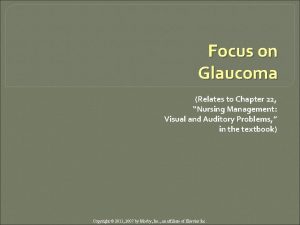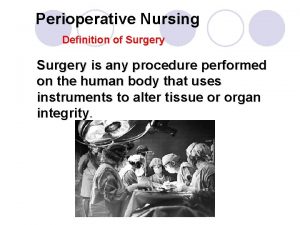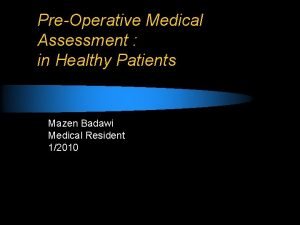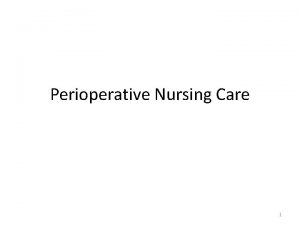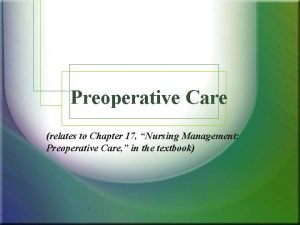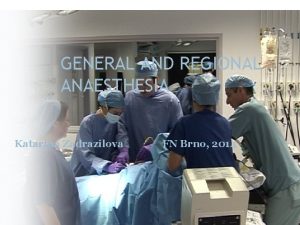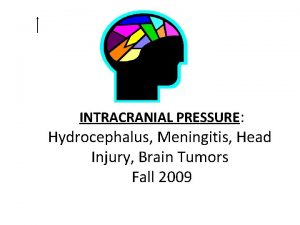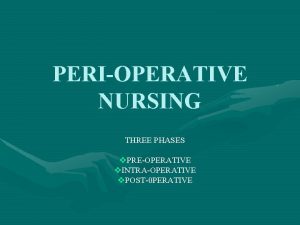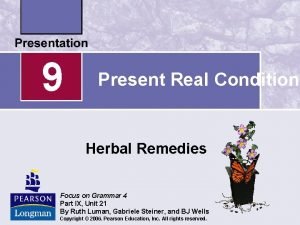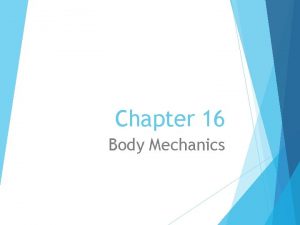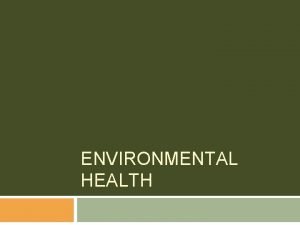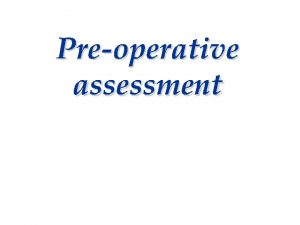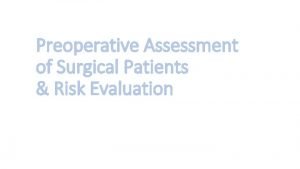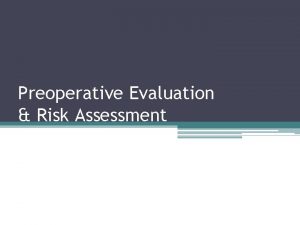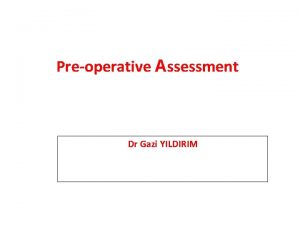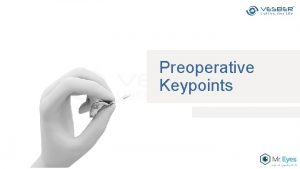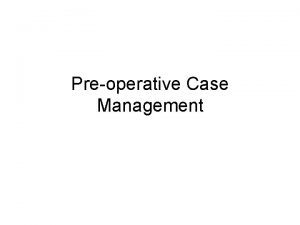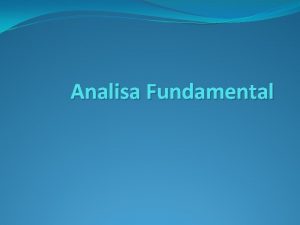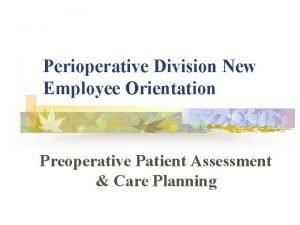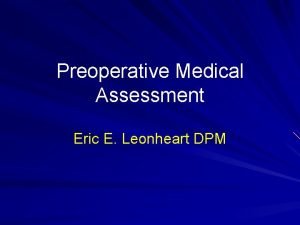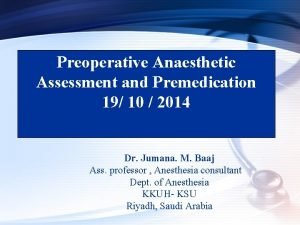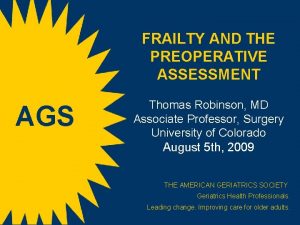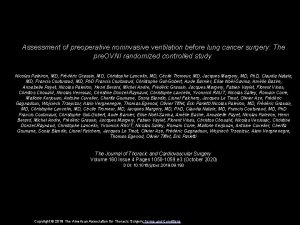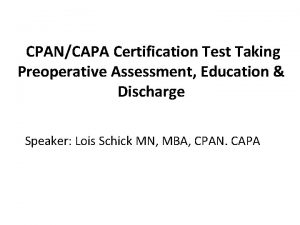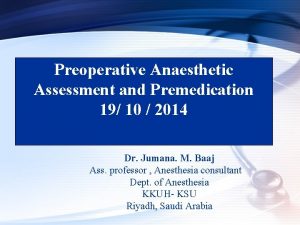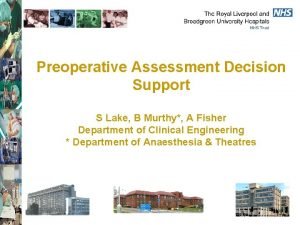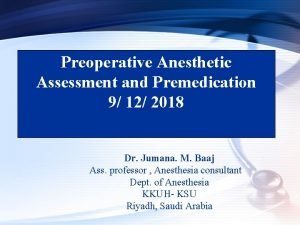PREOPERATIVE ASSESSMENT Careful preoperative assessment is fundamental to









































- Slides: 41

PREOPERATIVE ASSESSMENT

Careful preoperative assessment is fundamental to achieving good surgical outcomes. The same principles apply to both emergency and elective situations, the only difference usually being the extent to which preoperative assessment must be compromised when an emergency condition requires urgent intervention

Assessment of operative fitness and perioperative risk When making the decision to operate, the risks and potential benefits of surgery shouldbe weighed against those of alternative or no treatment. The purpose of preoperative assessment is to prepare the patient for surgery, identify co-morbid conditions, estimate and minmis perioperative risk by optimizing the patient's physical condition.

The majority of preoperative assessment for elective surgery takes place in the preoperative assessment one to two weeks before surgery, and culminates in the admission immediately prior to, on the morning of, surgery.

blish the severity and extent surgery by employing appropriate gations. For example, it both recurrent laryngeal nerves oid surgery as damage is a recognized of operation, on the ditions require appropriate sease extent.

The second objective is to identify co-morbid conditions through careful clinical assessment and through optimization, minimize perioperative risk.

In the emergency situation this process is condensed. Judging the timing of surgery is crucial. The surgeon must determine which interventions will optimize the patient's condition while avoiding deterioration due to unnecessary delay progression of the acute surgical problem

Systematic preoperative assessment 1 -Cardiovascular system The severity of cardiovascular disease is assessed -Angina and previous myocardial infarction indicate significant coronary artery disease although bypass grafting, angioplasty and coronary artery stenting may ameliorate their associated risks. Exertional dyspnoea, orthopnoea and paroxysmal nocturnal dyspnoea may indicate left ventricular failure, whilst significant dependent oedema could signify right sided heart failure.

Clinical examination should detect arrhythmias, carotid artery, heart murmurs, hypertension and signs of cardiac failure. Antiplatelet agents and anticoagulants are widely prescribed in the general population and may need to be stopped or modified prior to surgery

2 -Respiratory system In patients with asthma, chronic obstructive pulmonary disease (COPD) or fibrotic lung disease, purulent sputum may indicate an infective exacerbation. In asthmatics, previous ITU and hospital admissions as well as steroid dependency indicate severe disease. Functional respiratory reserve is best assessed by exercise tolerance, for example how far a patient can walk on the flat, up an incline, or how many stairs they can climb before needing to rest because of shortness of breath. Significant dyspnoea should be investigated with pulmonary function tests.

Patients with features of acute viral respiratory illness should have surgery postponed where possible. This is due to the increased risk of bronchospasm and susceptibility to postoperative bacterial pneumonia which is compounded by the effect of general anaesthesia which depresses ciliary activity, reducing the clearance of secretions and pathogens

3 -Smoking All patients should be offered support to quit smoking, particularly once the decision to operate has been made. should be explained to the patient. Some of the benefits occur within hours (reduced circulating nicotine and carboxyhaemoglobin) while others take weeks, months, or even years. Despite the significant advantages in the perioperative period, many patients are unable or unwilling to stop smoking prior to and after their surgery

Benefits of preoperative smoking cessation • Reduced airway hyper-reactivity / bronchospasm • Reduced sputum production reduces the risk of atelectasis • Improved ciliary function results in increased sputum clearance, helping to protect against infection • Reduced carboxyhaemoglobin so increases oxygen carrying capacity of blood • Reduced nicotine related systemic and coronary vasoconstriction

4 -Alcohol in chronic alcohol abuse, liver enzymes are induced, increasing hepatic drug metabolism. Consequently, increased doses of hepatically metabolized drugs, including anaesthetic agents are required to achieve therapeutic effect. Conversely, in acute alcohol intoxication reduced anaesthetic doses are required. In addition, the risk of aspiration pneumonia should be anticipated and preventive measures taken. In patients with a significant alcohol history, the risk of alcohol related liver and cardiac disease and coagulopathy should be anticipated.

5 -Nutritional status All patients should have their height and weight measured and BMI (body mass index) calculated. It is important to look for signs of malnutrition such as low BMI, bodyweight < 90% predicted, > 20% weight loss, hypoproteinaemia and hypoalbuminaemia as they have all been related to increased rates of postoperative complications (particularly wound infection and pulmonary) as well as delayed anastamotic and wound healing. For these reasons, it is important to treat malnutrition preoperatively if time permits

6 -Obesity Obese patients are at increased risk from surgery and anaesthesia and special equipment may be required. Obese patients are at risk of major associated co-morbidities (e. g. diabetes, obstructive sleep apnoea, degenerative joint disease and cardiovascular disease) In practice, the majority of patients cannot lose weight without support and referral to the GP and dietician for weight loss programmes, including supervised exercise, may be beneficial

Drug therapy A drug history should be recorded prior to admission for surgery. Drugs that require special consideration in the perioperative period are. 1 -Long-term steroid therapy Increased circulating cortisol is an important part of the metabolic response to surgical stress. . Long-term steroid therapy may result in hypoadrenalism and the inability to mount an effective response to surgical stress. It is therefore important that patients receive steroid therapy throughout the perioperative period

An increased steroid dose is usually necessary to counter surgical stress for all but minor procedures. High doses (100 mg hydrocortisone every 6 hours) may be needed if the risk of hypoadrenalism is compounded further by postoperative complications including infection. Signs of hypoadrenalism include hypotension/ shock, hyponatraemia and hyperkalaemia

Antiplatelet therapy and anticoagulants Antiplatelet therapy with aspirin, clopidogrel and dipyridamole is common. The risk of thromboembolic events, particularly myocardial infarction, if antiplatelet therapys withdrawn is should be weighed against the risk of surgical haemorrhage if treatment is continued.

Where possible, surgery should be postponed antiplatelet agents withdrawn only after consultation with a cardiologist or vascular surgeon. Anticoagulation with warfarin, commonly for prevention of embolic events in atrial fibrillation, and for treatment of deep vein thrombosis and pulmonary embolism is also frequently encountered. The risk of a thromboembolic event

with anticoagulant suspension has to be balanced against the risk of bleeding in an anticoagulated patient undergoing surgery. The use of bridging anticoagulation should be considered.

Oral contraceptives and hormone replacement therapy Depending on the type of surgery being planned and the patient's other risk factors for venous thromboembolism, it may be advisable to discontinue oestrogen-containing drugs (combined oral contraceptive pills [OCP] and hormone replacement therapy [HRT]) 4– 6 weeks before surgery.

Psychiatric drugs Tricyclic antidepressants (TCA) and phenothiazines can both cause hypotension and TCAs are also associated with increased risks of arrhythmia. In the case of phenothiazines, the risk of stopping the medication outweighs the potential benefits but the anaesthetist should be aware of the potential complications. It is not essential that tricyclic antidepressants be stopped preoperatively, but the anaesthetist should be alerted

Lithium should be stopped 24 hours prior to surgery as it mimics sodium, potentiating the action of neuromuscular blocking agents. Monoamine oxidase inhibitors interact with opiates and vasopressor agents with the potential of neurological and cardiovascular complications. Ideally, they should be stopped 2– 3 weeks prior to surgery,

Allergies Common examples in the surgical practice include antibiotics, iodine, adhesive dressings and latex. Full-blown anaphylactic reactions to latex are rare but some degree of latex sensitivity is common. Special care has to be taken to clear the patient environment of latex for those with severe allergic responses as it is common in gloves and other surgical and anaesthetic equipment.

Pregnancy Elective surgery should be avoided in the first and third trimesters of pregnancy. The risk of miscarriage and potential teratogenicity is high in the first trimester and this is usually encountered in relation to surgery for an acute abdomen at this stage. Third trimester surgery is associated with significant maternal risks and premature labour. If surgery is necessary, it is best undertaken in the second trimester in conjunction with the obstetric team.

Previous operations and anaesthetics Details of previous anaesthetics including complications, side effects and reactions should be sought and should alert the anaesthetist to potential anaesthetic challenges including a difficult endotracheal intubation. Previous

major anaesthetic complications or a suspicious family history should alert to the possibility of a rare inherited abnormality. Pseudocholinesterase deficiency is an inherited enzyme abnormality also known as scoline apnoea and is characterized by prolonged apnoea requiring prolonged ventilation in response to short acting, depolarizing muscle relaxants such as suxamethonium chloride. Malignant hyperpyrexia is an inherited autosomal dominant condition characterized by life-threatening hyperpyrexia

Preoperative investigations are undertaken to assess fitness for anaesthetic and identify problems amenable to correction prior to surgery. Preoperative investigations commonly include haematological, biochemical, radiological, cardiovascular and respiratory tests.

Haematology Full blood count The majority of patients undergoing surgery will have a preoperative full blood count. The oxygen carrying capacity of blood (haemoglobin concentration) is importance but the platelet and white cell count are also important considerations in terms of haemostatic capacity. Any patients undergoing

Wherever possible, anaemia should be corrected preoperatively to optimize oxygen delivery to the tissues. Preoperative blood transfusion should only be considered for haemoglobin concentrations below 8 g/dl. surgery with the potential for significant blood loss should have a full blood count, as should those with signs or symptoms of anaemia, patients with significant cardiorespiratory disease that may compromise oxygen delivery to the tissues and those with overt or suspected blood loss (for example gastrointestinal tract symptoms).

An abnormally elevated white cell count may indicate infection or haematological disease and should be investigated preoperatively. Thrombocythaemia increases the risk of thromboembolism and prophylactic measures should be taken. Thrombocytopenia may need to be corrected to reduce the risk of bleeding. The UK blood transfusion service recommends transfusing to a platelet count of 50 × 109/l for lumbar puncture, epidural anaesthesia, endoscopy with biopsies and surgery

Coagulation screen The indications for coagulation studies include suspected abnormal clotting, anticoagulation treatment and consideration of epidural anaesthesia. When disseminated intravascular coagulation (DIC) is suspected, such as in sepsis, fibrinogen degradation products (FDP) and D-dimers should be measured. The surgical implications of selected disorders of coagulation are considered below.

Biochemistry Urea and electrolytes Analysis of urea and electrolytes (U&E) is not necessary in young patients presenting for minor surgery. Elderly patients and those presenting for major surgery, as well as patients with renal dysfunction, cardiovascular disease, fluid balance problems including dehydration and patients on diuretic therapy or any drug therapy that may affect electrolyte balance or renal function should all have routine blood urea and electrolyte analysis

Liver function tests All patients with known liver disease, significant alcohol consumption or signs of liver disease should have liver function tests measured.

Cardiac investigations Electrocardiography (ECG) is of very limited value in predicting the risk of ischaemic events and generally should only be performed in the elderly (over 65 years), to detect occult rhythm disorders or signs of previous cardiac events. In younger patients ECG should be restricted to those with signs of, or known, cardiovascular disease and those with risk factors for ischaemic heart disease. Routine chest X-ray should only be performed in the context of cardiovascular assessment where congestive cardiac failure is suspected. Echocardiography is used to assess cardiac function (left ventricular ejection fraction in particular) and may be indicated prior to major surgery and in patients with suspected valvular disease and heart failure.

Cardiopulmonary exercise tests (CPEX). CPEX is a dynamic test of cardiopulmonary reserve that is used selectively to help select patients for high risk surgery such as thoracic, vascular and cardiac surgery.

Respiratory investigations Patients with purulent sputum suspected of having a chest infection should have sputum culture and antibiotic sensitivity performed. Preoperative chest X-ray is a useful baseline in patients with known or suspected pulmonary disease, and may demonstrate consolidation, atelectasis and pleural effusions. Routine chest X-ray is not indicated, having poor sensitivity to detect new respiratory disease

Pulmonary function tests are useful to gauge severity and reversibility of the obstructive component of respiratory disease

Informed consent is central to the practice of surgery, and has to be obtained for surgical procedures, other treatment modalities, investigations, screening tests and prior to patient participation in research

Capacity exists if a patient can: • understand retain the information presented • weigh up the implications, including risk and benefit of the options • communicate their decision. Circumstances where the capacity to consent may not exist: • children • mental illness • fluctuating or irreversible loss of cognitive function • patients subject to undue coercion.
 Nursing management for glaucoma
Nursing management for glaucoma Perioperative definition
Perioperative definition Preoperative medical evaluation of the healthy patient
Preoperative medical evaluation of the healthy patient Cataract surgery nursing diagnosis
Cataract surgery nursing diagnosis Perioperative care definition
Perioperative care definition Pre operative care
Pre operative care Chapter 17 preoperative nursing management
Chapter 17 preoperative nursing management Preoperative care ppt
Preoperative care ppt Antibiotics for meningitis
Antibiotics for meningitis 3 phases of perioperative nursing
3 phases of perioperative nursing Deuteronomy 8:1-6
Deuteronomy 8:1-6 Safety is simple as abc
Safety is simple as abc Requires unbiased and careful questioning
Requires unbiased and careful questioning The monkey's paw be careful what you wish for
The monkey's paw be careful what you wish for Oh be careful little mouth what you say
Oh be careful little mouth what you say Take heed lest you fall
Take heed lest you fall Be careful it's a jungle out there
Be careful it's a jungle out there Why careful selection is important
Why careful selection is important Ten cuidado con tus manos
Ten cuidado con tus manos Dias agata
Dias agata Beautifully comparative and superlative
Beautifully comparative and superlative Adverbs of manner careful
Adverbs of manner careful Careful make sentence
Careful make sentence Simple speech about nature
Simple speech about nature Cunning degrees of comparison
Cunning degrees of comparison Avverbi di parlare
Avverbi di parlare Beware lest you fall
Beware lest you fall Pay careful attention to your own work
Pay careful attention to your own work Little comparative and superlative
Little comparative and superlative Using the body in an efficient and careful way
Using the body in an efficient and careful way Comparative y ile biten sıfatlar
Comparative y ile biten sıfatlar Themes about being careful
Themes about being careful Be careful punctuation
Be careful punctuation You must be careful
You must be careful Careful protection and preservation of environment
Careful protection and preservation of environment Oh be careful little mouth what you say
Oh be careful little mouth what you say Lest you fall
Lest you fall Be careful then how you live
Be careful then how you live Flattering tongue meaning
Flattering tongue meaning Emotions and moods
Emotions and moods Be careful! the ladder is broken. you __________________.
Be careful! the ladder is broken. you __________________. Making careful notes is essential for
Making careful notes is essential for
